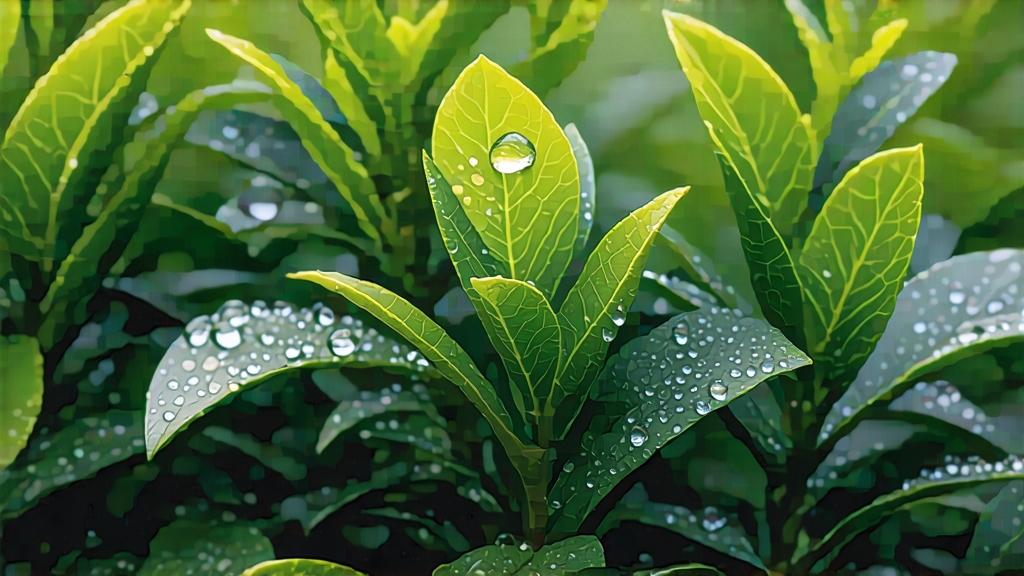
Among the six major classes of Chinese tea, white tea is the least interventionist, a quiet meditation on leaf, air, and time. Within this minimalist family, Bai Hao Yin Zhen—literally “White Hair Silver Needle”—stands as the most aristocratic, picked only during a fleeting handful of spring mornings when the air is still cool enough to kiss the buds with tiny hairs of silver. To understand China’s tea imagination, one must first hold a single needle of Yin Zhen against the light and watch it glow like a sliver of moon.
Historical whispers place Yin Zhen’s birth in the mist-laden hills of Fuding, northern Fujian, during the early years of the Song dynasty (960-1279). Court chronicles from 1064 mention “white down tea” presented to Emperor Renzong; whether that tea was Yin Zhen is debated, but local legend is unequivocal: a tea maiden named Yin discovered that buds plucked before Qingming, the spring tomb-sweeping festival, would dry into pale spears that floated upright in boiled spring water, releasing a fragrance like pear blossom after rain. By the late Ming, when loose-leaf infusion replaced compressed cakes, Fuding growers had refined the technique of indoor withering on bamboo trays, elevating the bud-only pick into a tribute item shipped north along the Tea-Horse Road. European records first catalogued “Pekoe Silver Needle” in 1785, when Swedish East India clerks noted its price on the London market exceeded that of Keemun by 300 percent, a premium paid for the illusion of drinking liquid moonlight.
Botanically, Yin Zhen is almost always the Da Bai cultivar—Big White—whose buds can reach 3.5 cm, plump with amino acids and cloaked in a duvet of trichomes that reflect light like frost. Only the unopened spear, still sheathed in its first two leaves, qualifies; any sliver of green showing at the tip is rejected. A skilled picker can gather barely one kilogram of fresh buds in a dawn, which will shrink to 200 g after drying. Thus, every cup represents roughly 1,200 hand-selected shoots, a fact that silences even the most loquacious tea merchant.
The craft is disarmingly simple yet unforgiving. Buds are spread one layer deep on reed trays resting on wooden racks in a sunless upper room where louvered windows invite a slow dialogue between leaf and mountain air. For 36 to 48 hours the tea master refuses to hurry nature; he merely adjusts the angle of the slats, sensing barometric shifts with the back of his wrist. When the bud feels leather-tough and exudes a faint scent of sweet hay, it is transferred to a gentle charcoal oven at 40 °C for no more than ten minutes, just enough to fix the remaining moisture at 5 percent. No rolling, no pan-firing, no oxidation beyond what the leaf chooses—white tea is therefore sometimes described as “the tea that isn’t cooked.” The result is a downy needle the color of antique ivory, weightless yet springy, releasing a liquor that ranges from pale platinum to warm topaz depending on vintage and water chemistry.
Westerners often under-appreciate the aging potential of Yin Zhen. While green tea declines after a year, a well-stored lot of Silver Needle, kept below 25 °C and 60 % relative humidity, will darken into honeyed amber and develop notes of dried apricot, sandalwood, and white truffle. In Fuding, brides still lay down a tong of Yin Zhen upon engagement, uncapping it only when their first child reaches one month, believing the tea absorbs and later bestows the family’s accumulated happiness.
To brew Yin Zhen respectfully, one must unlearn the violence of boiling water and metal teapots. Begin with a gaiwan of thin porcelain, 120 ml, pre-warmed until too hot to hold. Measure 4 g of needles—about two heaping teaspoons—and let them slide along the wall so they form a loose haystack. Bring spring water to 85 °C; hotter temperatures scorch the trichomes, releasing astringency. The first infusion, 45 seconds, is purely aromatic: lift the lid and inhale steam that carries hints of cucumber skin, fresh alfalfa, and a fleeting suggestion of cantaloupe r